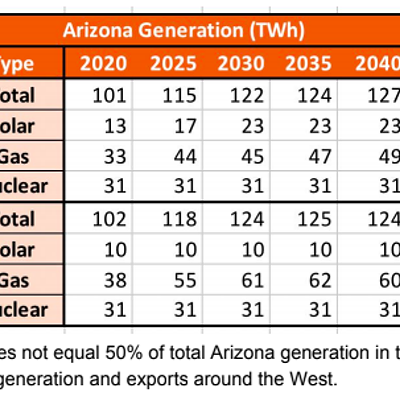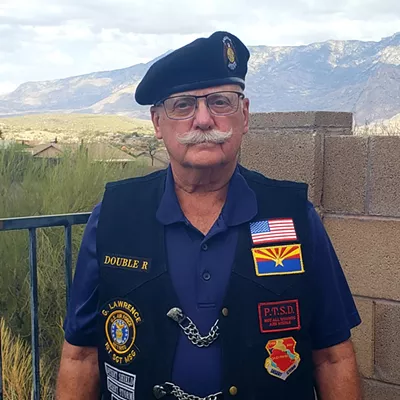Under the Energy Policy Act of 2005, federal facilities such as Davis-Monthan are required to meet graduated renewable-energy goals, and be generating at least 7.5 percent of their energy from renewable sources by the year 2013. For security reasons, the base also hopes to have its own backup power supply.
To get there, Davis-Monthan has floated a number of ideas, ranging from solar thermal to waste-to-energy incineration. And the latter has, by far, caused the most consternation.
When it was first discussed two years ago, neighbors near the proposed incinerator site were up in arms. Soon, city officials convened a 12-member task force to evaluate Davis-Monthan's options.
On April 22, the task force's meaty report arrived at City Council chambers. Among the technologies it reviewed was plasma arc gasification, a largely unproven process for turning trash into synthetic fuel, which can then be run through turbines. Another was gasification, which is the transformation of waste into a fuel called "syngas." Yet one more method is direct incineration, where municipal waste is burned to create steam, which then generates electricity.
But "burning" is the spoiler here. Since municipal garbage can involve a bit of everything, it's not exactly clear what toxic chemicals might emerge from these processes or just how they'd be contained.
Not surprisingly, neighbors of Davis-Monthan are hardly pleased at the notion of becoming guinea pigs for unproven energy-production methods. City officials also balk at turning some 65,000 tons of municipal waste over to the base each year, citing potential revenue losses at the Los Reales Landfill. As an alternative, Davis-Monthan might import its waste from elsewhere, raising a new batch of concerns.
But despite all of these complications--and a dismal review in the task-force report--base officials refuse to declare incineration dead. Instead, Sgt. Jim Fisher, a Davis-Monthan spokesman, says consideration of the project has been put on hold until next year. And he blames critics for politicizing the idea. "It's a shame, because they put a lot of momentum behind stopping this project before it ever really got going--before there was a definite proposal on the table with specifics that would answer many of the concerns that had been raised."
Others see darker forces behind Davis-Monthan's seeming attachment to this technology. Among them is Steve Leal, a City Council member representing Ward 5. He suggests that huge companies such as Wheelabrator Technologies Inc. may be attempting to turn military bases into cash cows.
Wheelabrator specializes in renewable energy from waste fuels, and it's a subsidiary of Waste Management Inc., a corporation noted for giving generously to Republican causes.
Leal first aired his suspicions at a public meeting near the base. "It just seems like such a strange idea for this technology to have its origins with the Air Force," he says. "A number of people at the meeting, myself included, were suspicious that this was (Vice President Dick) Cheney and President Bush leaning on the Pentagon."
He suggests that the White House's goal might be "to pave the way for companies that have been unsuccessful at getting these plants built around the country, but were seizing the opportunity against the backdrop of global terrorism--the idea that the base should be energy-independent--to push these through."
When this contention was raised with Fisher, he deemed it "a little over my head as a base public-affairs spokesman." A call to the White House for comment was not returned.
Meanwhile, even though the incineration concept has been placed on hold, concerns raised in the report continue to reverberate. So does the sense among some task-force members that Davis-Monthan officials tried to dominate their evaluation process. "There was a concern," says one observer, "that (Davis-Monthan) was attempting to paint lipstick on this pig."
If so, they failed. It's tough to find any upbeat conclusions in the report concerning incineration. For example, while solar alternatives scored roughly four times more positives than negatives, incineration was just the reverse.
Still, base officials dispute the pessimism toward incineration. "I helped write that report, especially the sections on solar and waste energy," says Margaret Bowman, Davis-Monthan's pollution prevention manager. "And I didn't see it as negative."
While the economics of burning trash on the base "may not be feasible right now, that doesn't mean that the technology is something to be discarded," she says. While the waste-to-energy method currently used in the United States is incineration, "in the rest of the world, they also use gasification, though plasma arc and gasification are still in their infancy."
Joan Lionetti is executive director of Tucson Clean and Beautiful and another task-force member. She doesn't understand how Davis-Monthan officials could possibly view the report as positive toward incineration, "although they were very much supporting waste-to-energy to the very end," she says, "in spite of all the information that was presented." There were serious issues of "transportation, of health and safety, and the original location, which was right next to a neighborhood off Irvington Road."
But there's a big caveat: Even if it wanted to, the city couldn't outright halt an incineration project on its own property, says Lionetti. "The base has autonomy. They have a 50-year lease for 4,100 acres from the city. And they're leasing it for about $770 a year, which is incredible. It's an open lease, with no restrictions."
Either way, she says that a renewed push toward solar may ultimately put the kibosh on D-M's incinerator ambitions. "Our recommendation, and the scoring mechanism that the task force put together, shows that solar is the most positive way for the base to be going."
Bowman says that Davis Monthan won't outright defy the community's wishes. But as dust settles on this fat new report, base officials remain reluctant to give up the ghost on their incineration project.
"It's neither dead nor alive," she says. "It was an idea two years ago, and it's still only an idea. We think the idea is a good one, but that's all it is."







